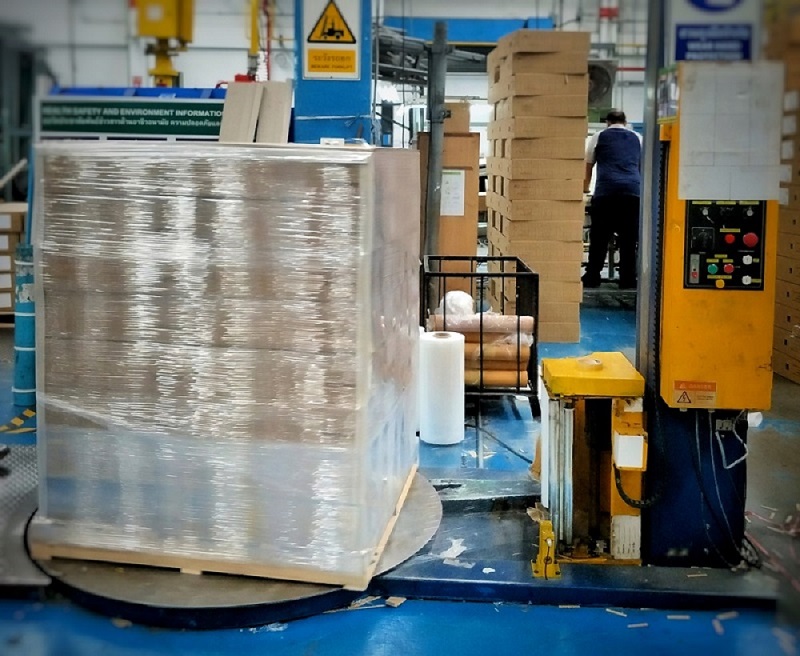Introduction
Are you looking for an efficient and cost-effective way to wrap pallets while keeping your packaging process smooth and reliable? Then a semi-auto stretch wrapper might just be the solution for you. This article provides an in-depth look at semi-auto stretch wrappers, their benefits, how they work, and how to choose the right one for your specific needs. So let's dive in and explore the world of semi-auto stretch wrapping!
1. What is a Semi-Auto Stretch Wrapper?
A semi-auto stretch wrapper is a type of packaging equipment designed to wrap stretch film around pallets or loads for transportation and storage purposes. This type of machine requires an operator to manually attach the film to the pallet and start the wrapping cycle. Once the cycle is complete, the operator must cut the film and secure it. This process ensures that the load is properly contained and protected from damage, dust, and moisture.
2. Benefits of Using Semi-Auto Stretch Wrappers
There are several advantages to using a semi-auto stretch wrapper in your packaging process, including:
- Improved load containment: Stretch wrapping provides better load containment compared to other methods, such as strapping or banding. The stretch film holds the load together tightly, preventing it from shifting or falling during transportation or storage.
- Enhanced product protection: Stretch film offers excellent protection from dust, dirt, and moisture, ensuring that your products remain clean and safe throughout their journey.
- Cost-effective: Semi-auto stretch wrappers can help you save money on packaging materials, as they generally use less stretch film than manual wrapping methods. Additionally, the use of a machine can improve efficiency and reduce labor costs.
- Reduced risk of injury: Manually wrapping pallets can be physically demanding and may lead to injuries if not done properly. A semi-auto stretch wrapper allows the operator to perform the task with less strain, reducing the risk of injury.
- Consistent wrapping quality: When using a semi-auto stretch wrapper, the operator can easily adjust the tension and overlap of the stretch film, ensuring consistent and high-quality wrapping every time.
3. How Does a Semi-Auto Stretch Wrapper Work?
A semi-auto stretch wrapper operates in the following steps:
1. The operator places the pallet or load on the turntable or conveyor.
2. The operator attaches the stretch film to the pallet or load.
3. The operator selects the desired wrapping settings, such as the number of top and bottom wraps, film tension, and overlap.
4. The machine starts the wrapping cycle, which involves rotating the pallet or moving it through the wrapper while applying the stretch film.
5. Once the wrapping cycle is complete, the operator cuts the film and secures it to the load.
6. The wrapped pallet is then removed from the machine, ready for transportation or storage.
4. Types of Semi-Auto Stretch Wrappers
There are several types of semi-auto stretch wrappers available on the market, including:
- Turntable stretch wrappers: These machines use a rotating platform to spin the pallet or load while the film is applied. They are ideal for small to medium-sized loads and can handle various load types and shapes.
- Rotary arm stretch wrappers: Instead of rotating the pallet, these machines use a rotating arm to apply the stretch film. They are suitable for larger and heavier loads, as well as loads that are unstable or difficult to rotate.
- Orbital stretch wrappers: These machines wrap the film around the pallet horizontally, making them perfect for long or oddly-shaped products.
5. Factors to Consider When Choosing a Semi-Auto Stretch Wrapper
When selecting a semi-auto stretch wrapper for your business, consider the following factors:
- Load size and weight: Choose a machine that can accommodate the size and weight of your pallets or loads.
- Load type and stability: Consider the type of products you'll be wrapping and whether they require special handling or adjustments.
- Production speed: Assess your production requirements and select a machine that can meet your desired output.
- Available space: Make sure you have enough space in your facility to accommodate the machine and allow for easy loading and unloading.
- Budget: Consider your budget and look for a machine that offers the best value for your investment.
6. How to Maintain and Troubleshoot Semi-Auto Stretch Wrappers
Proper maintenance and troubleshooting of your semi-auto stretch wrapper can help ensure smooth operation and extend the life of the machine. Some tips include:
- Regularly inspect and clean the machine to remove dirt, dust, and debris.
- Check and replace worn or damaged parts, such as belts, rollers, and bearings.
- Lubricate moving parts as recommended by the manufacturer.
- Regularly inspect and replace the stretch film, ensuring it is in good condition and properly loaded.
- Train your operators on the correct use and maintenance of the machine to minimize the risk of errors and downtime.
- Consult the machine's manual or contact the manufacturer for assistance with troubleshooting and solving any issues that may arise.
Conclusion
A semi-auto stretch wrapper can be a valuable addition to your packaging process, offering improved load containment, product protection, and cost savings. By understanding the different types of semi-auto stretch wrappers and considering factors such as load size, production speed, and budget, you can choose the right machine for your business. Remember to maintain and troubleshoot your semi-auto stretch wrapper regularly to ensure optimal performance and longevity. With the right semi-auto stretch wrapper in place, you can enjoy a more efficient and reliable packaging process for years to come.


